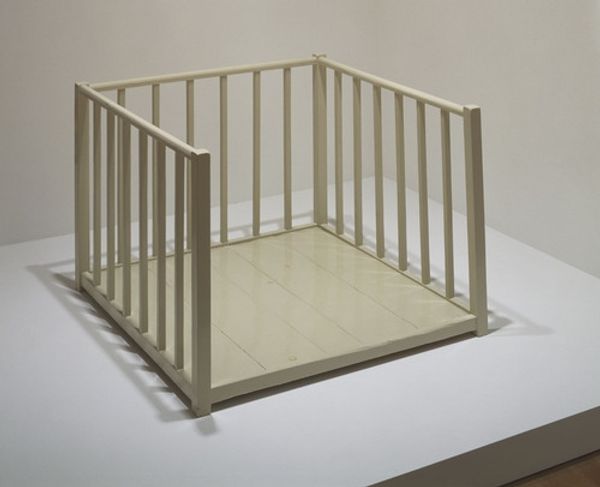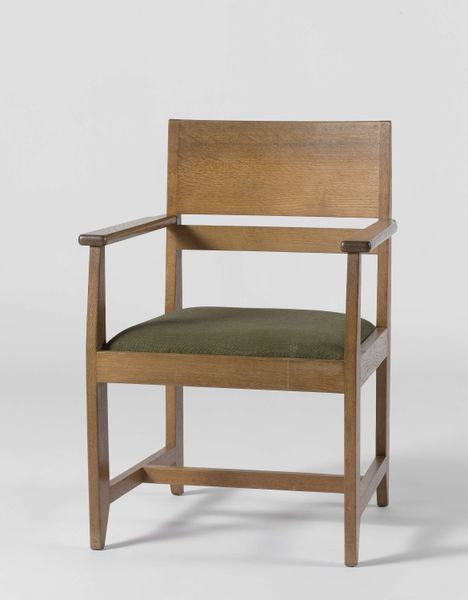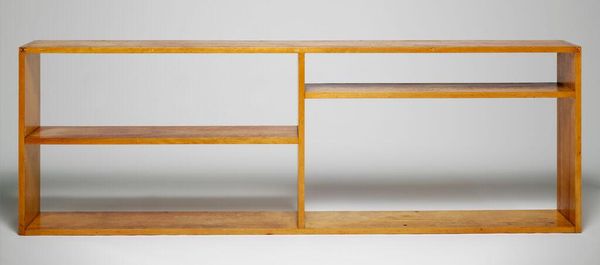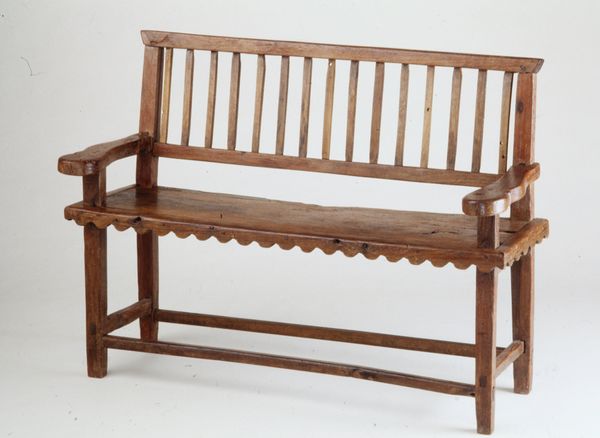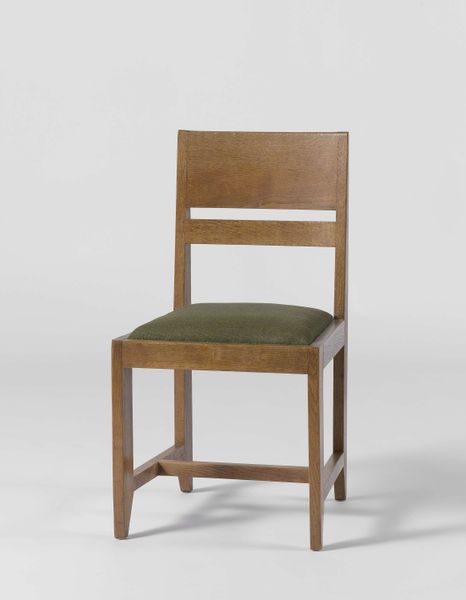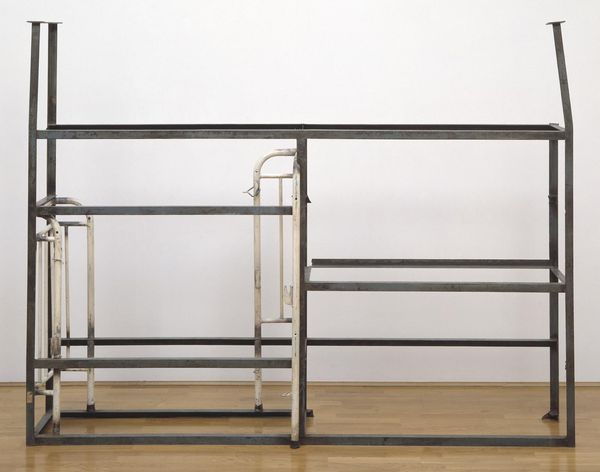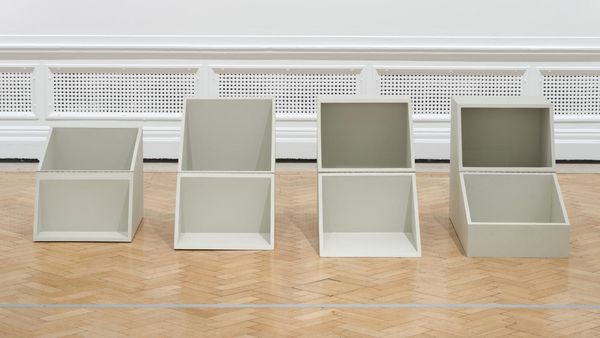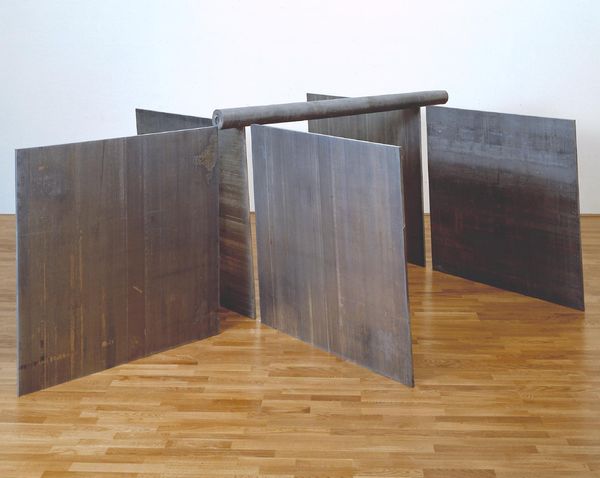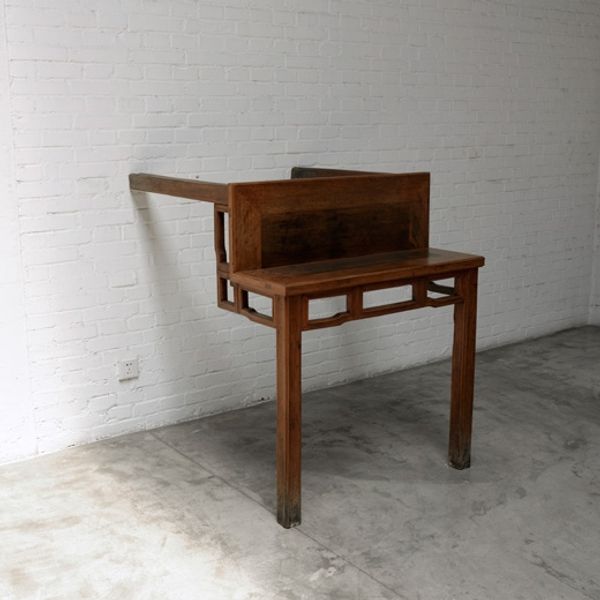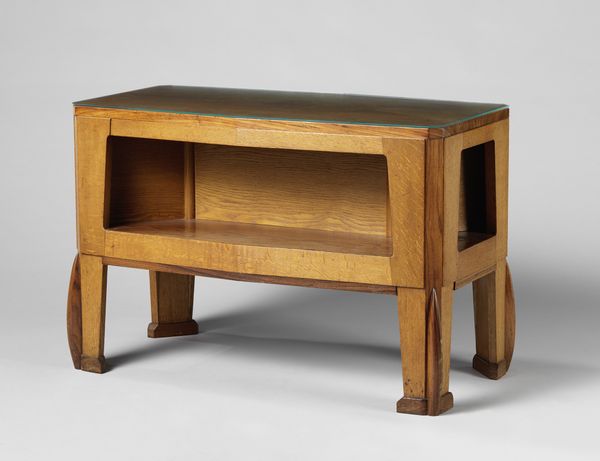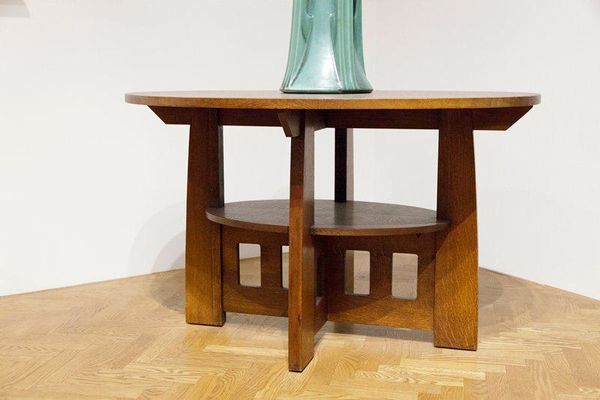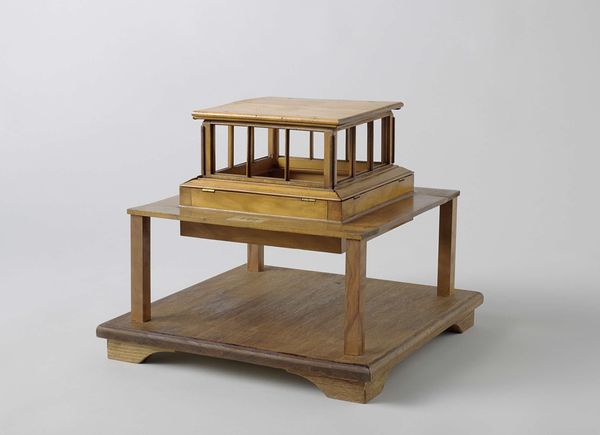
Dimensions: object: 800 x 1190 x 650 mm
Copyright: © Deimantas Narkevicius | CC-BY-NC-ND 4.0 DEED, Photo: Tate
Curator: Here we have Deimantas Narkevicius’s object, "Never Backwards," currently residing in the Tate Collections. It strikes me as a strangely muted sculpture. Editor: It certainly has an odd feeling, something almost melancholic. The bars evoke a sense of confinement, but the pale color palette softens the impact. Curator: Narkevicius, born in 1964, often explores themes of memory and the weight of history through his works. This piece, I think, uses the form of a child’s crib as a potent symbol. Editor: A crib implies innocence and beginnings, but the title "Never Backwards" suggests resistance to regression, a kind of forced march forward. The olive green end, so different from the wood, feels significant. Curator: Perhaps the green is a marker of change, contrasting with the natural wood that may represent tradition. It points to the tensions between the past and the desired trajectory of the future. Editor: It's a subtle dialogue between comfort and constraint, isn’t it? Curator: Precisely, it's an invitation to consider how societal progress impacts individual experience. Editor: The piece definitely leaves a lasting impression. It is sparse and evocative.
Comments
tate 6 months ago
⋮
http://www.tate.org.uk/art/artworks/narkevicius-never-backwards-t12779
Join the conversation
Join millions of artists and users on Artera today and experience the ultimate creative platform.
tate 6 months ago
⋮
Narkevicius altered a child’s wooden cot by cutting away sections of the rails and filling it with paraffin, destroying the object’s original function and reminding us that we can never go back in time. As he states, ‘Human beings cannot become little again and go sleeping in a baby crib. On the other hand the title has reference to...cultural development. It cannot go backwards as it would be regression’. In this way Narkevicius stages a strange domestic scene which is at once highly personal yet almost universal. Gallery label, April 2012
